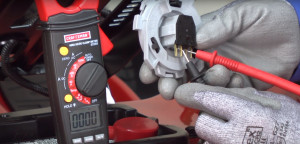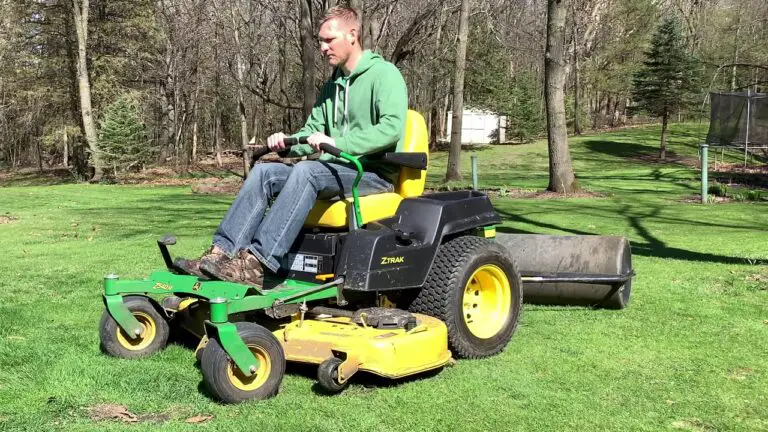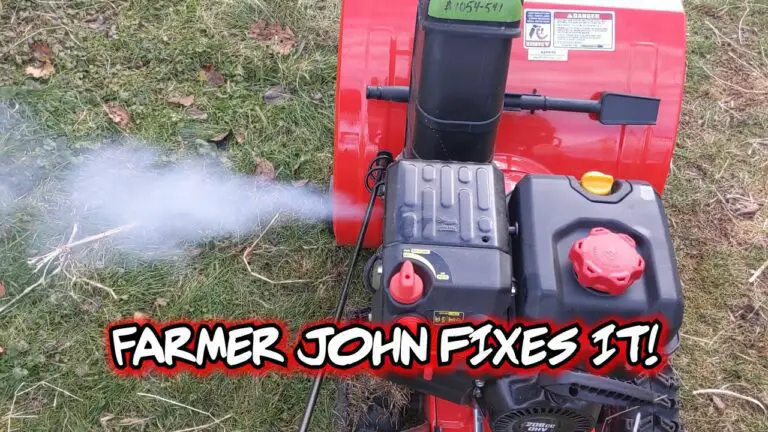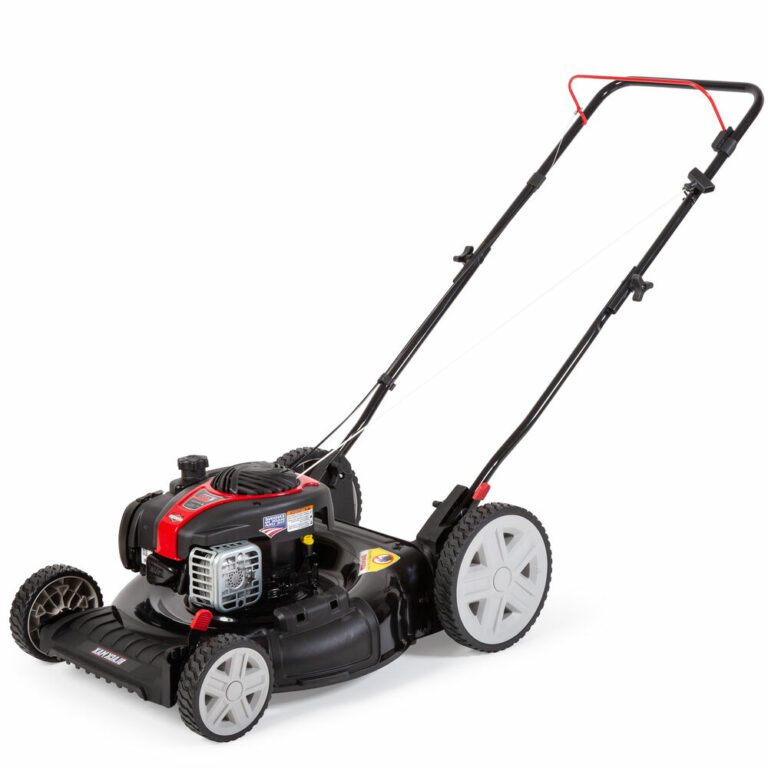A lot of hours on a riding lawn mower depends on its condition, maintenance, and usage, but generally, anything over 500 hours is considered high. Riding lawn mowers are a popular choice for homeowners looking to efficiently maintain their lawns.
However, it is essential to understand that these machines are not built to last indefinitely. Like any other mechanical device, riding lawn mowers have a specific lifespan. A crucial factor in determining the longevity of a riding lawn mower is the number of hours it has been operated.
While there is no exact answer as to how many hours on a riding lawn mower is considered a lot, it is generally accepted that anything over 500 hours is considered high. This figure, however, can vary based on the condition of the mower, regular maintenance, and the type of terrain it is used on. In this article, we will explore the factors that contribute to a riding lawn mower’s lifespan and provide some tips for prolonging its usage.

Credit: www.scottspower.com
Factors Affecting The Lifespan Of A Riding Lawn Mower
Keeping your riding lawn mower in optimal condition is essential if you want it to last for years. There are several key factors that can affect the lifespan of your machine. These factors include proper maintenance and care, frequency of use and duration, and the type of terrain and conditions in which it operates.
Proper Maintenance And Care:
- Regularly clean and inspect your riding lawn mower to ensure that it is free from debris and dirt buildup.
- Change the oil and replace the air filters according to the manufacturer’s recommendations.
- Sharpen or replace the blades as necessary to maintain cutting efficiency.
- Check the tire pressure and adjust it as needed for optimal performance.
- Store your mower in a dry and secure location to protect it from the elements.
Frequency Of Use And Duration:
- The more often you use your riding lawn mower, the more wear and tear it will experience.
- Limit excessive and unnecessary use to extend the lifespan of the machine.
- Avoid running your mower for extended periods of time without breaks, as this can lead to overheating and mechanical issues.
Type Of Terrain And Conditions:
- The terrain on which you operate your riding lawn mower can impact its longevity.
- Rough, uneven surfaces can put additional strain on the machine, leading to premature wear and tear.
- Similarly, mowing in wet or muddy conditions can also negatively affect the mower’s components.
- Take caution when operating on challenging terrains and adjust your speed accordingly.
By paying attention to these factors and taking the necessary steps to properly maintain and care for your riding lawn mower, you can significantly extend its lifespan. Remember to follow the manufacturer’s guidelines and consult a professional for any major repairs or concerns.
With the right approach, your riding lawn mower can provide years of reliable service on your property.
Signs Of Wear And Tear On A Riding Lawn Mower
Have you been spending more time on your riding lawn mower lately? As with any machinery, there comes a point where wear and tear start to take a toll. Knowing the signs of wear and tear on a riding lawn mower is crucial for maintaining its longevity and performance.
In this section, we will explore two key indicators: decreased performance and efficiency, as well as engine issues and abnormal noises. Let’s dive in!
Decreased Performance And Efficiency
- Slower mowing speed: If you notice that your riding lawn mower is moving slower than usual, it could be a sign that certain components, such as the transmission or belt, are wearing out.
- Uneven cuts: Are you getting uneven patches of grass after mowing? This could be an indication of dull or damaged mower blades, causing an inefficient cut.
- Reduced power: Is your mower struggling to climb hills or power through thick grass? Decreased engine power can be a result of wear and tear on the engine or related components.
- Increased fuel consumption: If you find yourself refilling the fuel tank more frequently than before, it might be a sign of inefficient fuel usage due to worn-out parts.
Engine Issues And Abnormal Noises
- Hard starting: Difficulty in starting the mower’s engine, such as excessive cranking or delayed ignition, can indicate wear and tear on components like the spark plug or ignition system.
- Unusual exhaust smoke: Excessive smoke or an abnormal color from the exhaust can point to engine issues, such as worn piston rings, valve stem seals, or a clogged air filter.
- Knocking or grinding sounds: Any strange noises coming from the engine, such as knocking or grinding, could be a sign of worn-out bearings, pistons, or other internal engine components.
- Belt squealing: If you hear a high-pitched squealing sound, it may be due to a worn or improperly adjusted drive belt, which can affect the overall performance of the mower.
Excessive Vibration Or Shaking
- Steering wheel vibration: Excessive vibration in the steering wheel can indicate problems with the front wheels, such as worn wheel bearings or tire issues.
- Seat or mower deck shaking: If you feel significant shaking while sitting on the mower or notice excessive vibration in the mower deck, it could be a sign of worn-out engine mounts, loose blade mandrels, or damaged pulleys.
Remember, maintaining your riding lawn mower is essential for extending its lifespan and ensuring optimal performance. Regular inspections, maintenance, and timely repairs can help prevent further damage. By keeping an eye out for the signs mentioned above, you’ll be able to address wear and tear issues with your riding lawn mower promptly.
Expert Advice On Determining The Ideal Usage Hours For A Riding Lawn Mower
Riding lawn mowers can be a game-changer when it comes to maintaining the beauty of your lawn. These powerful machines not only save time and effort, but they also make the task of mowing large areas more manageable. However, just like any other equipment, there is a limit to how much your riding lawn mower can handle.
Determining the ideal usage hours for a riding lawn mower is crucial to ensure its longevity and prevent unnecessary wear and tear. In this blog post, we will explore some expert advice on how to determine if you have been putting too many hours on your beloved machine.
Considering Manufacturer Guidelines And Specifications
It is always a good idea to refer to the manufacturer’s guidelines and specifications for your specific riding lawn mower model. These guidelines are designed to help you understand the recommended usage hours and maintenance intervals for your machine. Here are a few key points to consider:
- Check the owner’s manual or the manufacturer’s website for the recommended usage hours per year or per month.
- Keep in mind that these guidelines are based on average conditions and usage patterns, so adjust accordingly if you have unconventional mowing needs.
- Pay attention to any specific maintenance requirements outlined in the guidelines. Regular maintenance plays a significant role in keeping your riding lawn mower in top shape.
Seeking Recommendations From Experienced Users
When it comes to determining the ideal usage hours for a riding lawn mower, it can be helpful to seek advice from experienced users who have had similar machines for a while. Here are some key points to consider:
- Connect with the local community or online forums to find fellow riding lawn mower owners who can share their experiences.
- Ask for recommendations on usage limits based on different factors such as terrain, climate, and mowing frequency.
- Keep in mind that these suggestions should be taken as general guidance, as each lawn and machine are unique.
Consulting With A Professional Mechanic
If you are unsure about your riding lawn mower’s ideal usage hours, consulting with a professional mechanic can provide valuable insights. Here are some key points to consider:
- Find a reputable mechanic who specializes in lawn mower repairs and maintenance.
- Schedule a consultation to discuss your mowing habits, terrain, and any concerns you may have.
- The mechanic can assess the condition of your machine and provide personalized advice on usage limits and maintenance routines.
Remember, determining the ideal usage hours for a riding lawn mower is a combination of manufacturer guidelines, recommendations from experienced users, and professional advice. By following these expert tips, you can ensure that your mower remains in excellent condition and serves you for years to come.
Tips For Extending The Lifespan Of Your Riding Lawn Mower
Riding lawn mowers can make yard maintenance tasks much easier and more efficient. However, like any piece of equipment, they require proper care and maintenance to ensure their longevity. So, how many hours on a riding lawn mower is a lot?
While it’s difficult to give an exact answer, it’s safe to say that the average riding lawn mower can withstand around 500 to 750 hours of use before significant wear and tear becomes evident. To extend the lifespan of your riding lawn mower and get the most out of it, here are some essential tips to follow:
Regular Cleaning And Lubrication
- Clean the cutting deck, removing any grass clippings, dirt, and debris after each use.
- Regularly check and clean the air filters to ensure proper airflow.
- Lubricate the moving parts of the mower according to the manufacturer’s guidelines.
- Keep the mower blades sharp to ensure clean cuts and prevent excess strain on the engine.
- Clean and tighten the battery connections to prevent corrosion.
Checking And Replacing Worn-Out Parts
- Regularly inspect the tires for wear and tear, and replace them if necessary.
- Check the belts and cables, and replace them if they show signs of damage or wear.
- Inspect the spark plugs and replace them as recommended by the manufacturer.
- Keep an eye on the oil and fuel filters, and replace them when needed.
- Pay attention to any unusual noises or vibrations and investigate them promptly.
Storing The Mower Properly During Off-Seasons
- Before storing the mower, clean it thoroughly to remove any grass clippings, dirt, or debris.
- Add a fuel stabilizer to the tank to prevent the fuel from deteriorating during storage.
- Store the mower in a clean, dry, and well-ventilated area, away from extreme temperatures.
- Disconnect the battery and store it separately in a cool and dry place.
- Consider covering the mower with a protective cover to shield it from dust and other elements.
By following these tips, you can significantly extend the lifespan of your riding lawn mower. Regular cleaning and lubrication, checking and replacing worn-out parts, and proper storage during off-seasons will ensure that your mower continues to perform at its best for years to come.
So, take care of your riding lawn mower, and it will take care of your yard maintenance needs.
Understanding The Cost-Effectiveness Of A Riding Lawn Mower
Are you tired of spending countless hours pushing a heavy lawn mower around your yard? It may be time to consider investing in a riding lawn mower. But before you make the decision, it’s important to understand the cost-effectiveness of owning one.
Let’s explore the key factors to consider when it comes to the financial benefits of a riding lawn mower.
Comparing The Cost Of A New Mower To Repair Expenses
- Purchasing a brand new riding lawn mower may seem costly upfront, but it can save you money in the long run.
- Repairing an old and frequently breaking down mower can quickly accumulate expenses.
- Consider the cost of replacement parts, labor fees, and the time it takes for repairs, which can ultimately hinder your productivity.
- A new mower will likely come with a warranty, providing peace of mind and protection against potential repairs.
Evaluating The Value Of Time Saved And Increased Efficiency
- One of the biggest advantages of a riding lawn mower is the time saved on mowing your yard.
- With a traditional push mower, it could take hours to complete your mowing tasks, but a riding mower can significantly reduce that time.
- The increased efficiency of a riding mower allows you to complete the job quickly and move on to other tasks or simply enjoy your free time.
- Evaluate the value of your time and consider how much it’s worth to you to have more time for other activities.
Weighing The Benefits Of Upgrading To A Newer Model
- If you already own a riding lawn mower but it’s outdated, it may be worth considering an upgrade to a newer model.
- Newer models often come with enhanced features and technology that can make your mowing experience more comfortable and efficient.
- Some advanced features include zero-turn capabilities, improved maneuverability, and better fuel efficiency.
- Assess the benefits that come with upgrading and determine if the investment is worth the added convenience and improved performance.
By comparing the cost of a new mower to repair expenses, evaluating the value of time saved, and weighing the benefits of upgrading, you can make an informed decision about whether investing in a riding lawn mower is the right choice for you.
Enjoy a beautifully maintained yard without sacrificing your time and energy.
Conclusion
To determine whether the number of hours spent on a riding lawn mower is excessive or not, factors such as the size of the lawn, the frequency of mowing, and the maintenance of the mower itself must all be considered.
It is generally agreed upon that 300 to 500 hours of usage is considered a lot for a riding lawn mower. However, many factors can influence this number. Regular maintenance and proper care can significantly extend the lifespan of a riding lawn mower, allowing it to handle more hours before needing repairs or replacement.
Conversely, neglecting maintenance can reduce the mower’s longevity, requiring replacement sooner. It is essential to follow the manufacturer’s guidelines and perform routine maintenance tasks such as cleaning, lubricating, and changing oil and filters. Ultimately, assessing whether the hours on a riding lawn mower are excessive depends on an individual’s specific circumstances.
By considering the factors outlined in this blog post, individuals can make informed decisions about their lawn mower usage and ensure its longevity and optimal performance.







